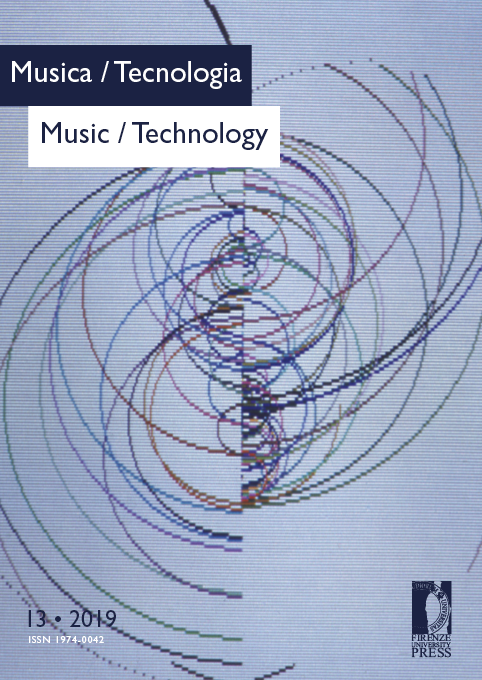Published 2012-12-28
How to Cite
Zavagna, P. (2012). Trascrivere documenti sonori. Musica/Tecnologia, 6, 13–132. https://doi.org/10.13128/Music_Tec-11908
Abstract
The idea of connecting a natural phenomenon to a form of writing – a romantic idea – has always been a target of men of science, before and after romanticism. Despite a long series of attempts, which failed more in their technological substance (– how can the acoustic phenomenon be represented? –) than in their depicting quality (– which are the characteristics of the acoustic phenomenon given back the depic- tion? –) or, better, in spite of the dialectic of the two questions, tran-scribing acoustical phenomenon is still a matter of study. Representing the signal is a problem that still involves scholars. It could be interesting to notice that, also in this field, the research oscillates between ‘discrete’ world (to represent musical notes) and ‘continuous’ world (to represent the physical phenomenon). The knowledge of the technological system that produced a sound document (we could even speak of document in general) allows a correct reading, although the stated aim it is not enough. As all operations we nowadays carry out take place in the digitale quantized domain, a re-mediation is necessary. This re-mediation allows the production of the original document in a new form, easy to manipulate. Throughout the conversion from ‘analogic’ to ‘digital’ a change in paradigm happens and this change is necessary to produce the transcription which is the final purpose of this work. While working in the sole flow of bits, we can ‘freely’ process information and give them back into various different forms among which the graphical form is one of the possible expressions. The interest for the «sound writing» topic is witnessed by the increased use of the most various forms of sound representation/depiction and by numerous web sites. Among the websites I would like to mention the one edited by William Burdette, soundwriting.org, devoted «to explore the intersections of audio recording and writing», that does not accepts only academic experiences, and the web site of historical contents by Victor Jones, Sound Visualization and Analysis in the Pre-Electronic Era -Visualization. A case study ends this work. The magnetic tape E20, from the RAI Studio di Fonologia Musicale Archive in Milano (Italy), carrying the electronic part of Hyperion by Bruno Maderna, is transcribed under a graphical form to be analyzed and to be collated with other works by the italian musician.Downloads
Download data is not yet available.


